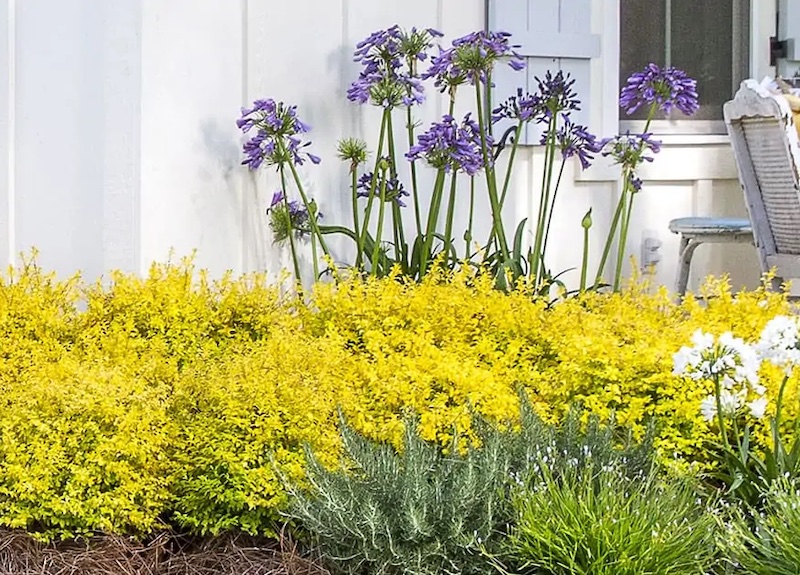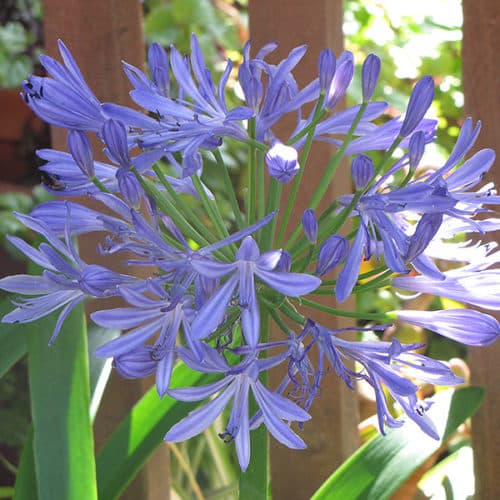Unleashing the Secret to Effective Agapanthus Cultivation: Tips and Tricks for a Flourishing Yard
In the world of horticulture, growing agapanthus effectively calls for a tactical method that encompasses different elements of plant treatment. With cautious focus to detail, one can unlock the secrets to supporting these sensational flowers, resulting in a yard that flourishes with elegance and vibrancy. By comprehending the subtleties of agapanthus growing, one can create an atmosphere where these plants flourish and flower perfectly. In the following discussion, we will discover vital ideas and methods that will guide you in the direction of a prospering agapanthus yard, offering understandings right into best methods, dirt conditions, sprinkling strategies, and a lot more.
Growing Agapanthus: Finest Practices
When planting Agapanthus, proper dirt preparation is vital for ensuring effective growth and growth of these stunning blossoms. Agapanthus, frequently called Lily of the Nile or African lily, thrives in well-draining dirt with a somewhat acidic to neutral pH degree - Agapanthus. Before planting, it is crucial to amend heavy clay soils with organic issue such as garden compost or peat moss to enhance drain and supply important nutrients for the plants
To grow Agapanthus, select an area that gets complete sunshine to partial color, as this will certainly promote healthy development and abundant flowering. Dig a hole two times the diameter of the plant's origin ball and position the Agapanthus at the exact same depth it was previously growing. Delicately backfill the opening with dirt, pressing down securely to remove any type of air pockets around the roots.
Water the freshly grown Agapanthus extensively and continue to keep the dirt uniformly moist, especially throughout the plant's energetic expanding period. Agapanthus. Applying a well balanced plant food once a month can additionally support the plant's growth and flowering. By adhering to these best practices for planting Agapanthus, you can create a magnificent display screen of these captivating flowers in your garden
Perfect Soil Issues for Agapanthus
For optimal growth and growing success of Agapanthus plants, making sure the dirt problems are excellent is essential. Agapanthus likes soil that is rich in nutrients, so incorporating a well balanced fertilizer during the expanding period can promote healthy development and dynamic blooms.

Watering and Feeding Tips
To ensure healthy and balanced growth and lively blossoms, correct watering and fertilizing strategies are crucial for effective Agapanthus cultivation. Agapanthus plants take advantage of routine watering, particularly during the growing season. It is advised to water deeply once a week, ensuring the dirt is wet but not waterlogged. During hot weather or in pots, even more constant watering might be required to stop the dirt from drying totally.
When it concerns feeding Agapanthus, a balanced fertilizer with equal parts nitrogen, phosphorus, and potassium can be applied in the spring to advertise healthy growth and flowering. Slow-release plant foods are ideal for giving nutrients slowly over an extended duration. Prevent over-fertilizing, as this can result in excessive foliage development at the expense of blooms.
Furthermore, incorporating natural matter like garden compost into the soil can enhance nutrient my sources degrees and enhance soil structure, aiding in the total health of the Agapanthus plants. By following these watering and fertilizing pointers, garden enthusiasts can guarantee their Agapanthus plants thrive and create magnificent display screens of blossoms.
Pruning and Deadheading Techniques
Proper trimming and deadheading methods play a vital role in maintaining the health and aesthetics of Agapanthus plants, complementing the crucial methods of watering and feeding for effective growing. Trimming Agapanthus entails getting rid of invested flower heads, dead or yellowing leaves, and general shaping of the plant to advertise much better growth. Deadheading, the process of getting rid of discolored blossoms, not just enhances the plant's appearance yet also encourages additional blooming.
When deadheading Agapanthus, it is recommended to trim off the blossom stem at the base making use of sharp, clean shears. This procedure reroutes the plant's power from seed production back right into origin and vegetation growth, promoting a much healthier and extra robust plant. Routine deadheading can extend the blooming duration of Agapanthus and prevent self-seeding, which can lead to overcrowding.
In terms of trimming, Agapanthus normally advantages from a light trim after blooming to clean up the plant and motivate here fresh development. Cutting down the spent blossom stems and removing any dead or broken vegetation aids preserve the plant's vigor and total look. Nonetheless, it is important to prevent reducing right into the crown of the plant, as this can deteriorate its health.

Protecting Agapanthus From Vermins and Diseases
Applying reliable parasite and disease monitoring approaches is important to safeguarding the health and wellness and vigor of Agapanthus plants in cultivation. One usual pest that affects Agapanthus is the Agapanthus borer, a caterpillar that tunnels right into the plant, triggering damages to the flowers and leaves.
In enhancement to insects, Agapanthus are prone to diseases such as origin rot and fungal leaf places. By staying attentive and dealing with insect and illness concerns immediately, gardeners can help their Agapanthus grow and thrive.

Final Thought
Finally, effective farming of agapanthus requires correct growing strategies, perfect dirt problems, ample watering and feeding, regular trimming and deadheading, and security from insects and illness. By complying with these pointers and methods, garden enthusiasts can ensure a flourishing garden loaded with beautiful agapanthus blossoms. Agapanthus. Bear in mind to keep regular treatment and More hints interest to information to promote the wellness and long life of these spectacular plants
When growing Agapanthus, correct dirt prep work is vital for making certain successful growth and development of these beautiful blossoms.Water the newly planted Agapanthus thoroughly and continue to keep the soil equally wet, specifically during the plant's energetic expanding season.For optimal growth and blooming success of Agapanthus plants, guaranteeing the soil problems are excellent is essential. When planting or transplanting Agapanthus, make certain the dirt is well-prepared to provide the needed foundation for the plants to establish themselves successfully. One usual bug that impacts Agapanthus is the Agapanthus borer, a caterpillar that passages into the plant, creating damages to the blossoms and leaves.